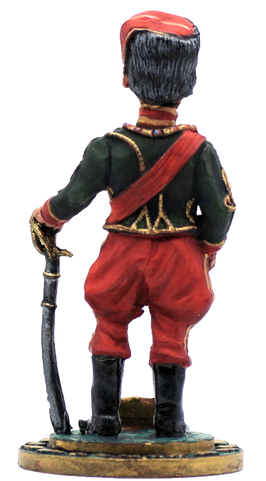
Ernesto
Prince de Ligne
Ernest Henri Louis Lamoral, 10th Prince de Ligne (January 13, 1857 in the former 1st arrondissement of Paris - June 23, 1937 in Brussels), Prince of Amblise and Épinoy, Grand of Spain, is a Belgian aristocrat of the 19th and 20th centuries. He is the younger brother of Louis de Ligne, 9th prince of Ligne, who has only one daughter as a descendant. King Albert I asked him to be the guardian of the minor children of Prince Napoleon-Victor Bonaparte and Princess Clémentine of Belgium. On the death of his mother, Marie Louise Marguerite de Talleyrand-Périgord (1832-1917), widow of Prince Henri de Ligne, he inherited (with his brother Louis, Prince de Ligne and his sister, Dowager Duchess of Beaufort-Spontin) the Hôtel de Cassini, sold in 1919 to the wealthy American heir Cecil Blumenthal known as Blunt. By letters patent of March 31, 1923, Ernest was authorized and his grandfather's descendants to use the predicate of Highness. By new letters of October 22 of the same year, he was authorized to bear the title of “prince of Amblise and Epinoy” by order of male primogeniture. The 10th Prince of Ligne died following an automobile accident.


The 1st Guides Regiment (French: 1e Régiment des Guides, Dutch: 1e Regiment Gidsen) was an cavalry regiment of the Belgian Army. The two historic Guides regiments of the Belgian Army were created respectively in 1833 and 1874. They formed part of the light cavalry and came to correspond to the Guard cavalry of other nations, providing mounted escorts for the monarchy prior to World War I. The two Guides regiments of the Belgian Army wore distinctive uniforms, comprising a plumed busby, green dolman braided in yellow, and crimson breeches, until the early stages of World War I. A modernized green and crimson uniform was introduced for officers' ceremonial dress in the 1930s and is still worn today for the marching and concert attire of the Guides Band.

Prince of Ligne is a title of Belgian nobility that belongs to the House of Ligne, which goes back to the eleventh century. It owes its name to the village in which it originated, between Ath and Tournai. The lords of Ligne belonged to the entourage of the Count of Hainaut at the time of the Crusades. The House of Ligne is one of the oldest Belgian noble families, dating back to the eleventh century. The family's name comes from the village of Ligne where it originated, between Ath and Tournai in what is now the Hainaut province of Belgium. The Ligne family began a progressive rise in the nobility, first as barons in the twelfth century, then counts of Fauquemberg and princes of Épinoy in the sixteenth century. Lamoral I received the titles of Prince of Ligne and Prince of the Holy Roman Empire in the early seventeenth century from Emperor Rudolf II. The Princes of Ligne are also Grandees of Spain, but this dignity is held personally rather than in conjunction with the title.
Awards: Collar and sash of the Distinguished Order of the Golden Fleece, Insignia and star of the Apostolic and Hospitaller Order of Saint George of Burgundy, Stars of the Order of the Crown (Belgium), the Royal and Much Distinguished Order of Charles III and the Order of Saints Maurice and Lazarus.






